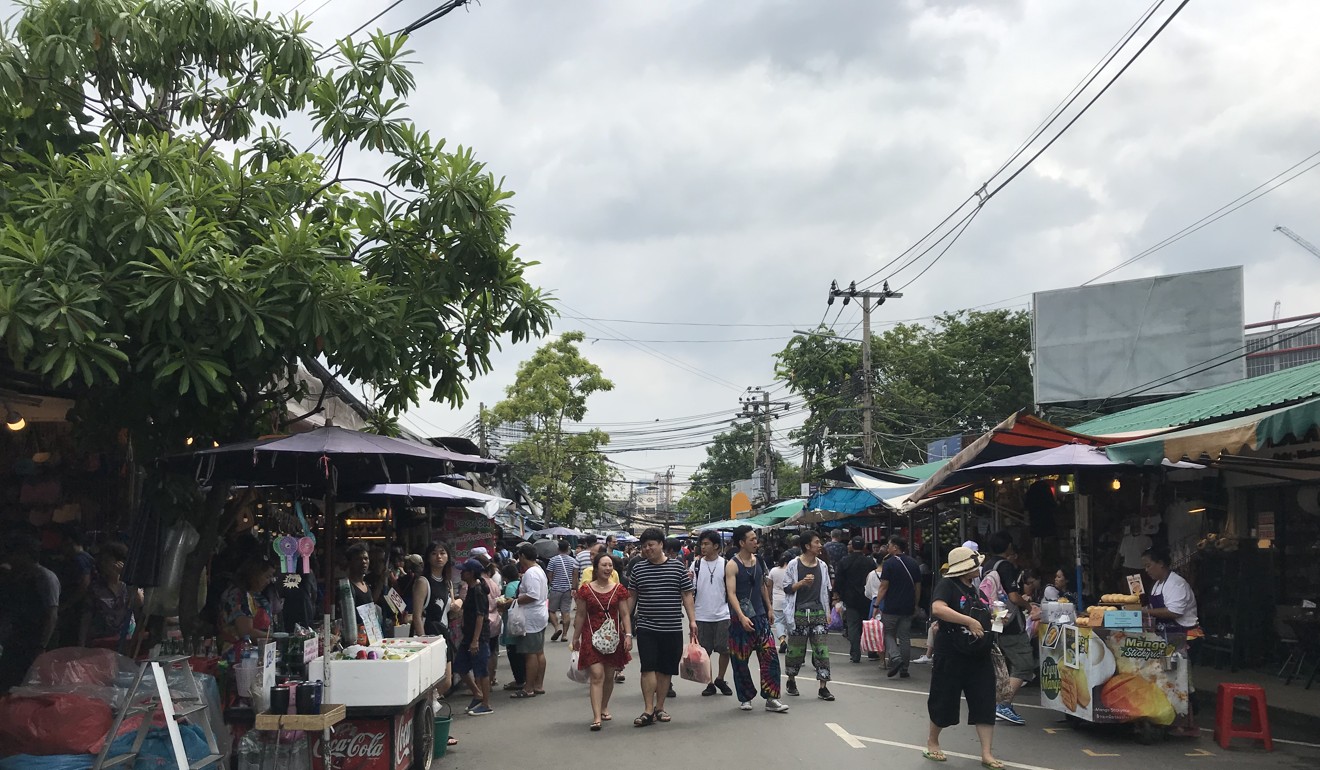How a new wave of Indian travellers are transforming tourism in Southeast Asia
- More than 25 million Indians travel abroad every year and while their numbers aren’t as big as the Chinese, they offer huge potential for the hospitality industry
- Unlike the Chinese who tend to pick ‘all-in tours’, Indians are more independent and rely on apps to arrange their travel

It’s raining heavily outside the Indra Square Mall in Pratunam, Bangkok. Three Indian millennial friends – Rupesh, Ashish and Sourabh – are standing at the entrance and planning their next move. Two are software engineers, one is an entrepreneur. Two live in Mumbai and the other in Hyderabad.
Having flown into the Thai capital with the low-cost carrier AirAsia, they’ve been making an extensive, eight-day tour of the kingdom. They’re adventurous, using local buses, the BTS and taxis. They’re also tech-savvy, using the Klook app to plan their travels.
However, it’s been awkward looking for vegetarian food. They find local restaurant and stall prices more expensive than at home. Anyhow, they prefer to spend their money on shopping.
“This is our first trip out of India. The flights were just so affordable. We travelled to Pattaya, Phi Phi Island, Phuket and Bangkok. But in all honesty, Bangkok is our least favourite. We thought it would be more exciting. Pattaya was fun because of the nightlife. In Phuket, we spent time snorkelling, swimming and relaxing on the beaches,” Sourabh said.
The three young men are also part of a wave that promises to transform Southeast Asian tourism just as a previous deluge from China shook up the hospitality industry a decade ago.
In short, Indians are travelling.
While the numbers aren’t as stratospheric as the Chinese right now, the growth rates are solid and the long-term potential is huge.
In 2018, some 1.6 million Indians visited Thailand, compared to 10.5 million from China. While India was only the sixth-largest inbound market behind China, Malaysia, South Korea, Laos and Japan, 1.8 million of its tourists are expected to come in 2019 making the South Asian nation, Thailand’s third-most important source of visitors. By 2030, this figure is expected to grow to 10 million.
What is driving this trend? Part of it has to do with India’s economic growth: average incomes have nearly doubled from 63,642 rupees (US$903) annually in 2011–2012 to 125,000 rupees (US$1,773) in 2018–2019.
At present, over 25 million Indian tourists travel abroad every year, and this number is projected to grow 15-18 per cent annually, according to the UN World Tourism Organisation (UNWTO).
These are numbers that cannot be ignored when one considers that the US-China trade war may potentially cut back on Chinese tourist numbers.
Moreover, Indian travellers often treat the entire region as one destination, hopping between cities and beach resorts. Southeast Asia is regarded as affordable, welcoming, safe and culturally diverse.
“Kuala Lumpur is the first stop on my trip. I will be here for a week. Then I will head to Singapore and Bali before going back to India,” said Santosh, a young father, who visited Malaysia’s Suria KLCC shopping mall.
Connectivity and non-stop flights are critical. Thailand’s boom has been driven by a host of new routes linking Bangkok with secondary and tertiary cities such as Jaipur, Kochi and Varanasi.
Indian low-cost carrier IndiGo is expanding into the region, connecting Kolkata to Hanoi and Ho Chi Minh City from October. This makes Vietnam its fourth regional destination after Thailand, Singapore, Malaysia and Myanmar.

While Indian tourists allegedly aren’t easy to manage, they do spend much more with local businesses than their Chinese counterparts.
Most Chinese visitors prefer “all-in tours.” As a result, much of the spending is directed towards businesses controlled by mainland-owned travel companies – in effect, facilitating “zero-dollar tourism” that brings virtually no revenue to host countries.
In contrast – as the three millennials in Bangkok show – Indian tourists tend to be more independent, booking their travels on their own using apps like TripAdvisor and Agoda.
They also seem more willing to escape the guided tour bubble and engage local merchants. The three youths noted that they spend about 1000 baht (US$33) each a day on food and drinks in Thailand – the bar bill sometimes goes up to 800 baht (US$26) a head.

In July, a controversial video went viral on social media – showing an Indian family being made to open their bags by the management of the Bali hotel they had been staying in.
It transpired that they had basically looted their rooms of decorations and furniture features, cavalierly offering to pay for everything when called out about this.
According to Ardi, an operations manager at a local hotel in Bali, the biggest difficulties faced when dealing with Indian tourists revolve around food and haggling.
“Many expect the food served to be altered to their palate preferences. They also almost always request for discounts on food, water sports and massages – even though these are not available.”
However, Ardi notes that these cultural issues can be overcome.
What would also help – besides boosting the number of direct flights between Indian cities and Southeast Asia’s tourism hubs – is more visa-free access.
Indonesia has done this while Thailand has waived its visa-on-arrival fees. Surely other countries can match or better this.
While India’s economy may be facing its own downturn, the country’s tourists are increasingly a force to be reckoned with in our region.
The Indians are coming – Southeast Asia best be prepared.